Repair in Educational Settings
Our Work
Given the pedagogical potential inherent in repairing broken objects, the urgency of the unfolding environmental crisis, and the relevance of repair skills and sensibilities to larger societal challenges, our efforts are currently focused on bringing teaching about repair into primary and secondary educational settings around the world.
The work involves:
Offering the Educator Resource Library, a catalogue of (mostly) free teaching resources from around the globe,
Offering Notes from the Field, a series of Notes by educators and repair advocates involved in teaching youth about repair — their vision, what they did and how they did it, and their experience,
Communicating the power of repair as a pedagogical tool, relevant to core curricula,
Guiding repair advocates for impactful engagement with educators, and guiding educators to productive engagement with community repair advocates,
Linking repair with Climate Literacy and Maker programs in the schools, and with environmental and making initiatives beyond the classroom,
Collaborating with professional development organizations to create new programs to help teachers adapt teaching about repair to their particular contexts,
Serving as thought partners, providing information, supporting networking, and
Helping projects secure funding through the Grants Program to create resources that further teaching about repair in primary and secondary educational settings, for addition to the Educator Resource Library.
Repair is more than fixing things. It’s a way of seeing: noticing what’s not working, imagining what could be, and taking action — again and again — to restore what matters. It is hands-on. It is hopeful. It is human.
Repairing broken objects is a powerful tool for teaching
Repair involves approaching what's broken, digging into and understanding what it’s made of and how it works, finding a point and mode of intervention, and putting it into working order. Repairing a broken object becomes an experiential model for addressing what's not working, regardless of scale.
London-based Restart Project: "We are working with keen educators and student leaders to discover how best to spread our Restart activities and ethos in schools."
Repairing a broken object engages:
Critical Thinking Skills: problem-solving, design thinking, reflection, systems thinking,
Hands-On Skills: tool use, technical literacy, design and engineering practices, applied learning, restorative practices,
Multiple Subjects: Interdisciplinary learning, STEAM, ecology, civics, physics,
Personal Development: Social Emotional Learning (SEL), resilience, adaptability, civic responsibility, agency.
Environmental Literacy: Importantly, teaching about repair not only makes space for talking about the environment, but the very process of making a repair invites youth into a different relationship with the material world. The physical immediacy required to make a fix draws the student into a familiarity with the object, an intimacy that fosters a sense of responsibility. Repair cultivates an ethos of care.
Repair Advocates Are Essential
Wasteloop repair program in Cascade School District’s high school, 2023/24
Working with educators to bring teaching about repair into educational contexts is a powerful way for repair advocates to expand the impact of their work, and to draw the support and participation of the school community into the repair initiative.
Our youth are in schools to develop the skills, capacities, goals and attitudes they’ll take out into the world. It’s imperative that a repair mindset be a part of their learning, yet the outsized demands on educators, combined with insufficient resources, create insurmountable barriers for envisioning possibilities, much less developing new programs and modifying curricula.
Educators need the energetic support of community repair advocates to:
Bring technical skills into the classroom and other educational settings,
Decrease the student to adult ratio in support of creative, hands-on learning,
Provide critical community political support for introducing new programs,
Think through creating meaningful, doable and productive repair exercises, and
Coordinate local repair events with school learning.
Repair Advocates + Educators = Real Impact
Advocates can’t do it on their own — limited access to youth and teaching skills.
Educators can’t do it on their own — lack of skills, time, adults in the room, knowledge.
Collaboration is a powerful force.



